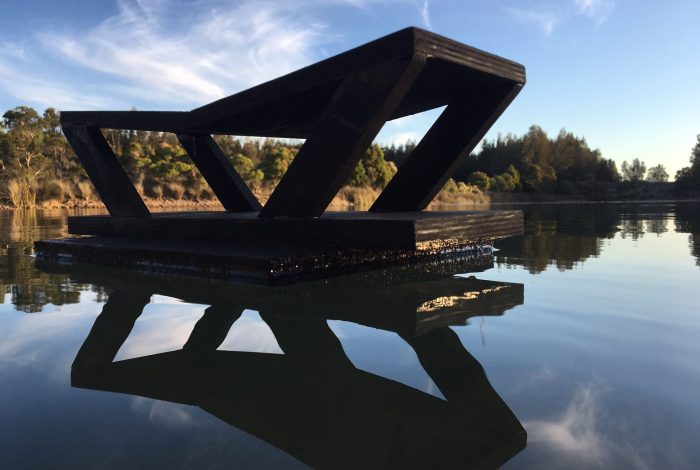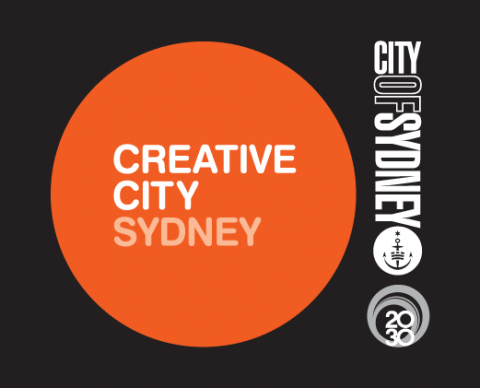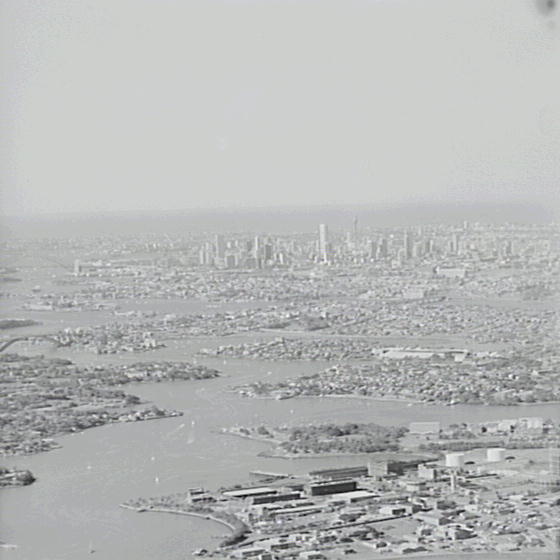
Arial Photograph, Sydney Reference Collection (SRC) – Photographs, City of Sydney Archives.1983
For the past two years The New Landscapes Institute has been conducting curatorial research into the Un-built architecture of Sydney through accessing a range of architectural archives and collections. Supported by a grant from the City of Sydney, this research has lead to the development of a new project, that will take place in 2021 and 2022, entitled “The Floating Embassy’.
The work is a continuation of a previous City of Sydney funded project ‘Groundwork: From the Archives Up’ which utilised archives from the NSW Government Architect Office and invited artists to respond to the state of public architecture and design today.
This next phase is different in that it focuses on the Un-built, plans and blueprints for Sydney and its surrounds that were never realized. This research has also allowed for an overview of what kinds of material is publicly available, – the premise being that the research would uncover a range of inspiring resources and act as a catalyst for future projects.
Over many months, curator Joni Taylor surveyed collections and archives that pertained to Sydney’s built (and un-built) environment, kept in collections such as the City of Sydney Archves , The Museum of Applied Sciences, State Library of New South Wales and the NSW State Archives. (International archives such as GSAPP ( Columbia University Graduate School of Architecture, Planning and Preservation (GSAPP) and Berkeley Art Museum and Pacific Film Archive (BAM/PFA) were also accessed).
Amongst the historical materials which ranged from models and maps to illustrations and reports, it was the transformation of Sydney’s waterways and harbour that was identified as being of particular interest and topic for further investigation.
From the source of the Parramatta River and its tributaries to the city, harbour and ocean coves these waterways were often a site for industry and waste disposal, detrimental to the local environment. At the same time the water continued to provide opportunities for travel, aquaculture, and leisure activities .
The images, such as captured in Graeme Andrews Working Harbuor Collection (City of Sydney) captured many temporary, architectural structures that are now lost.
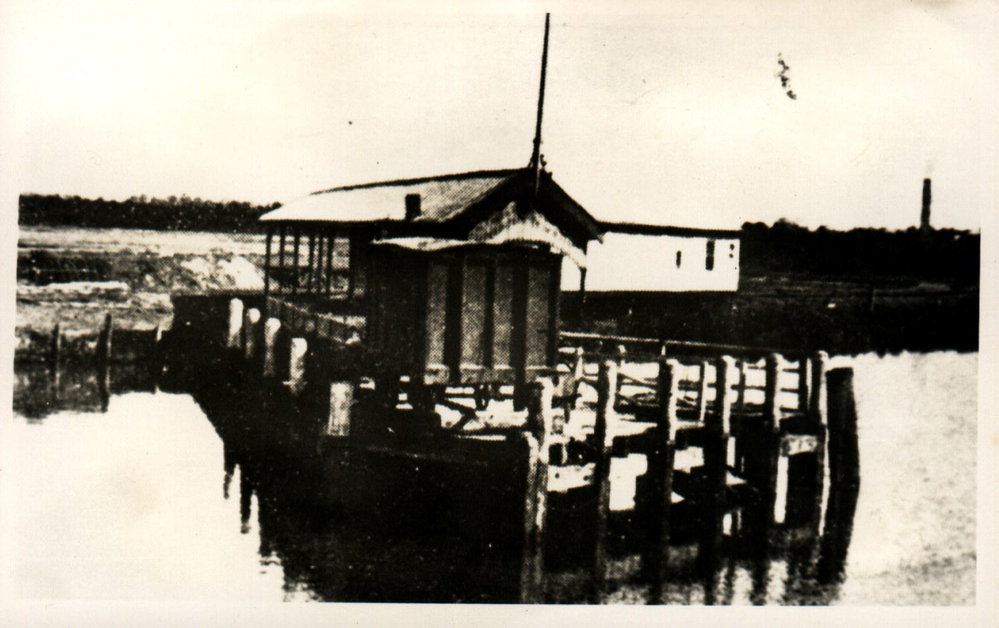
Ferry wharf, Parramatta River near Duck Creek, Graeme Andrews Working Harbour Photograph Collection, Courtesy of City of Sydney archives, 1910
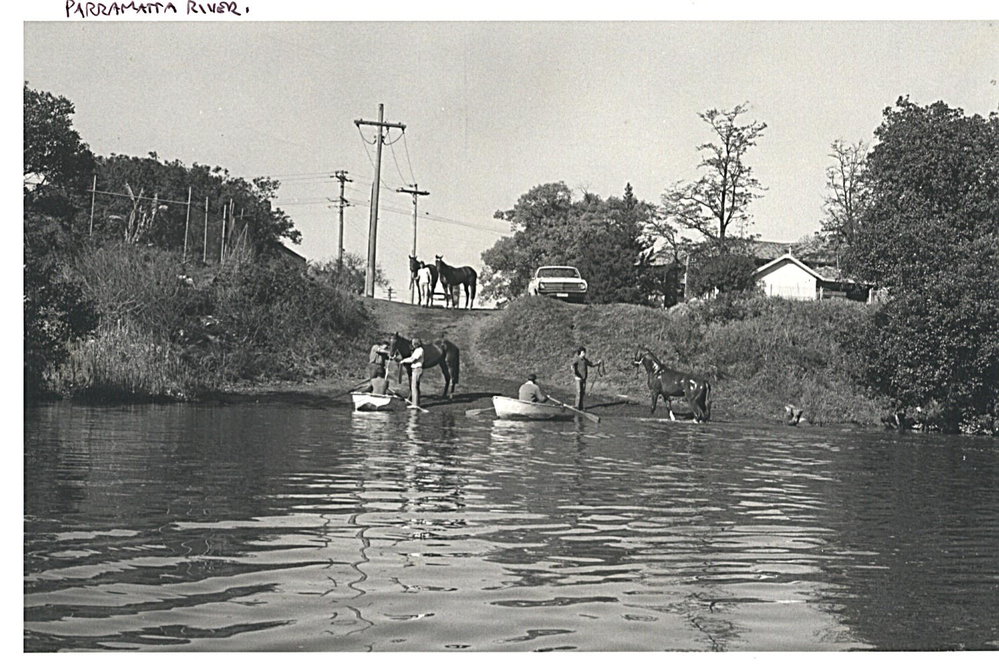
Courtesy of City of Sydney Archives. Graeme Andrews Working Harbour Photograph Collection, 1975.

Maritime Services Board (MSB) dredge BURROWAY and tug BORAY, nr Homebush Bay of City of Sydney, Graeme Andrews Working Harbour Collection, 1960
The Floating Embassy (2022-2023)
Focusing specifically on Sydney’s changing harbour and waterways, the NLI has highlighted a collection of materials to be utilized for the next phase. Like many of the NLI projects, this project will be site-specific and present an alternative and creative response to the historical narratives, where archives exist but are inconclusive. And as with all archives, what is absent can often be as important.
In order to present our archival research and to discuss future ideas around the transformation of these landscapes , the NLI will creating a floating platform to examine the past, present and future of our relationship to waterways. The NLI will collaborate with a variety of creative practitioners, artists, historians and designers.
One particular work of un-built aquatic architecture has caught our imagination and is being used as a starting point for the “The Floating Embassy:”
“The Dolphin Embassy” (from which the embassy partly takes the name) was a never realised proposal for a “floating interspecies communication station” by radical artist / architect collective Ant Farm (1968-1978) in Australia. It was to be an aquatic research station, using the newest technology to communicate with marine life – “a floating interspecies communication station”. Unfortunately never built, the Dolphin Embassy’s plans remain alive in the few remaining books, letters and drawings stored in selected archives . (Much of Ant Farm’s work and archives were destroyed in a warehouse fire in 1978).
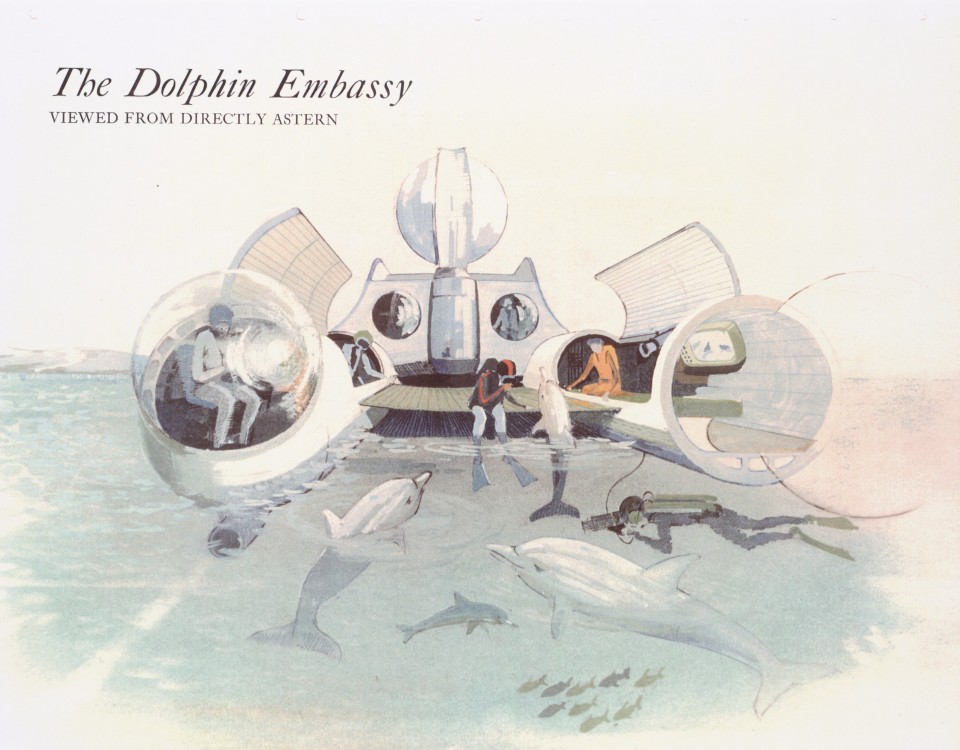
Ant Farm: The Dolphin Embassy Viewed from Directly Astern (1977); University of California, Berkeley Art Museum and Pacific Film Archive. Photo: Benjamin Blackwell.
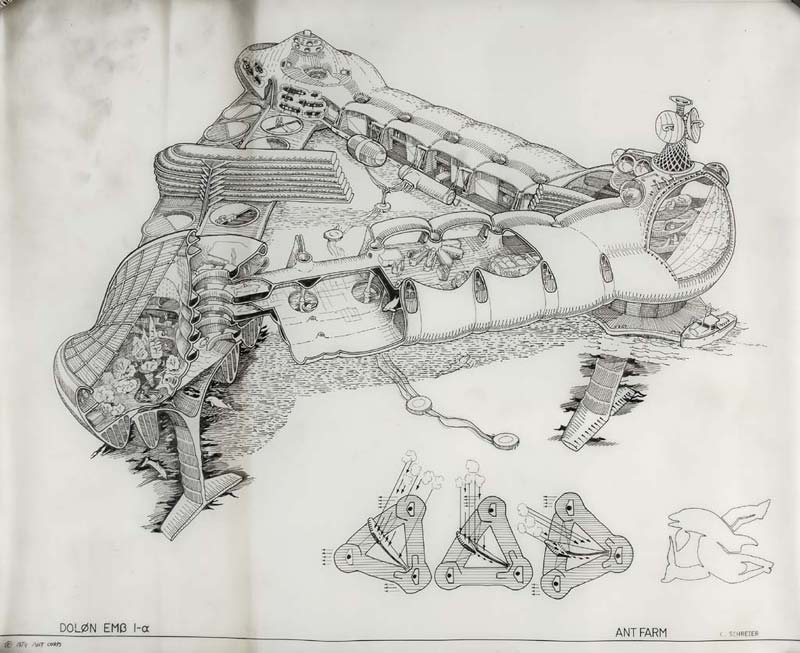
Dolphin Embassy, Ant Farm Timeline Chip Lord, Doug Michels, Curtis Schreier. 1976 revised 2002 by Chip Lord and Doug Michels.
This new ‘Floating Embassy’ will not replicate the original designs or plans, but use them as a springboard as to what a new floating communication module might look like. Instead of communicating with dolphins, this embassy will respond to where it is located, moving along Sydney’s waterways and host events such as roundtables, discussion, performances and screenings. The program will include a diverse range of participants, communities and audiences, and be unique to our current urban condition.
The new project explores how experimental spatial practices can respond to the ecology of our waterways and oceans and looks at the implications of public architectonic interventions into local water bodies.
Themes to be explored include Floating architecture, archives and the un-built, animal-human communication, water as commons, oceanic meteorological phenomena, strange weather and urbanisation of the water.
The work has consequently been selected as part of the Biennale of Sydney entitled Rivus, in 2022 and will transform over the 3 month exhibition as a result of its creative program, participants and location.
Archival materials will also be exhibited along with new materials as part of the Biennale of Sydney.

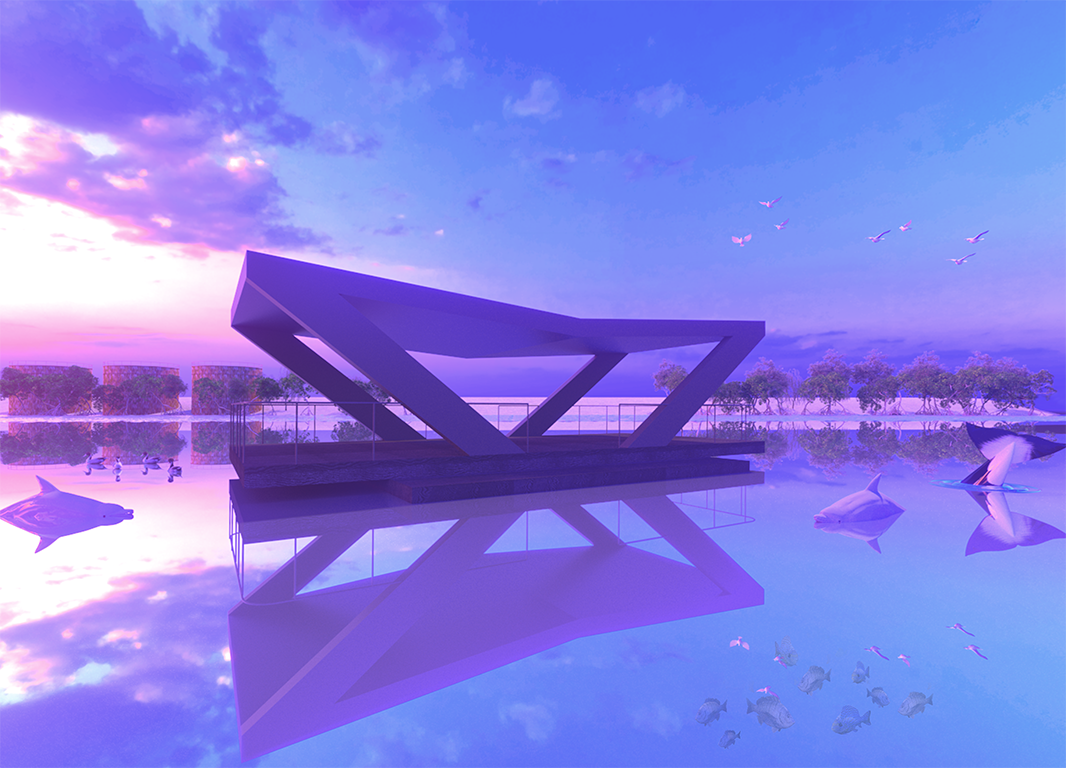
New Landscapes Institute, speculative images by created Ben Mitchell
Research possible with the support of City of Sydney project Grant.

